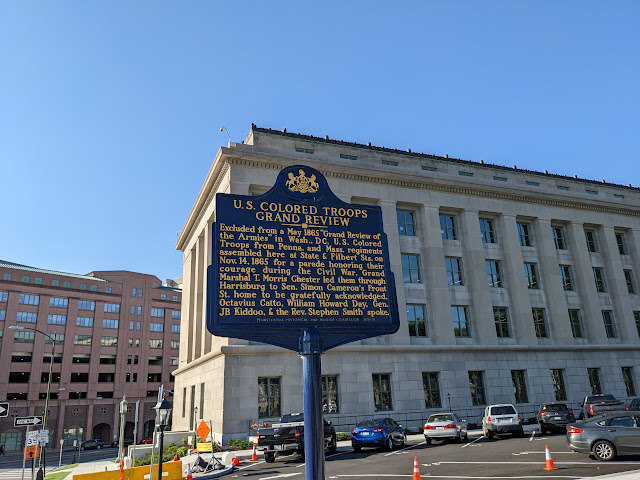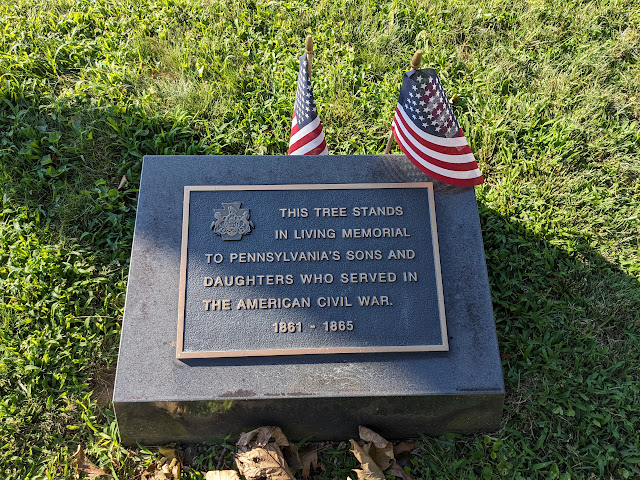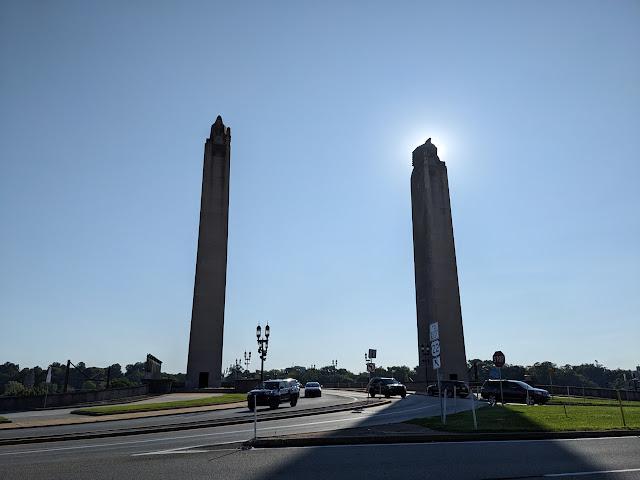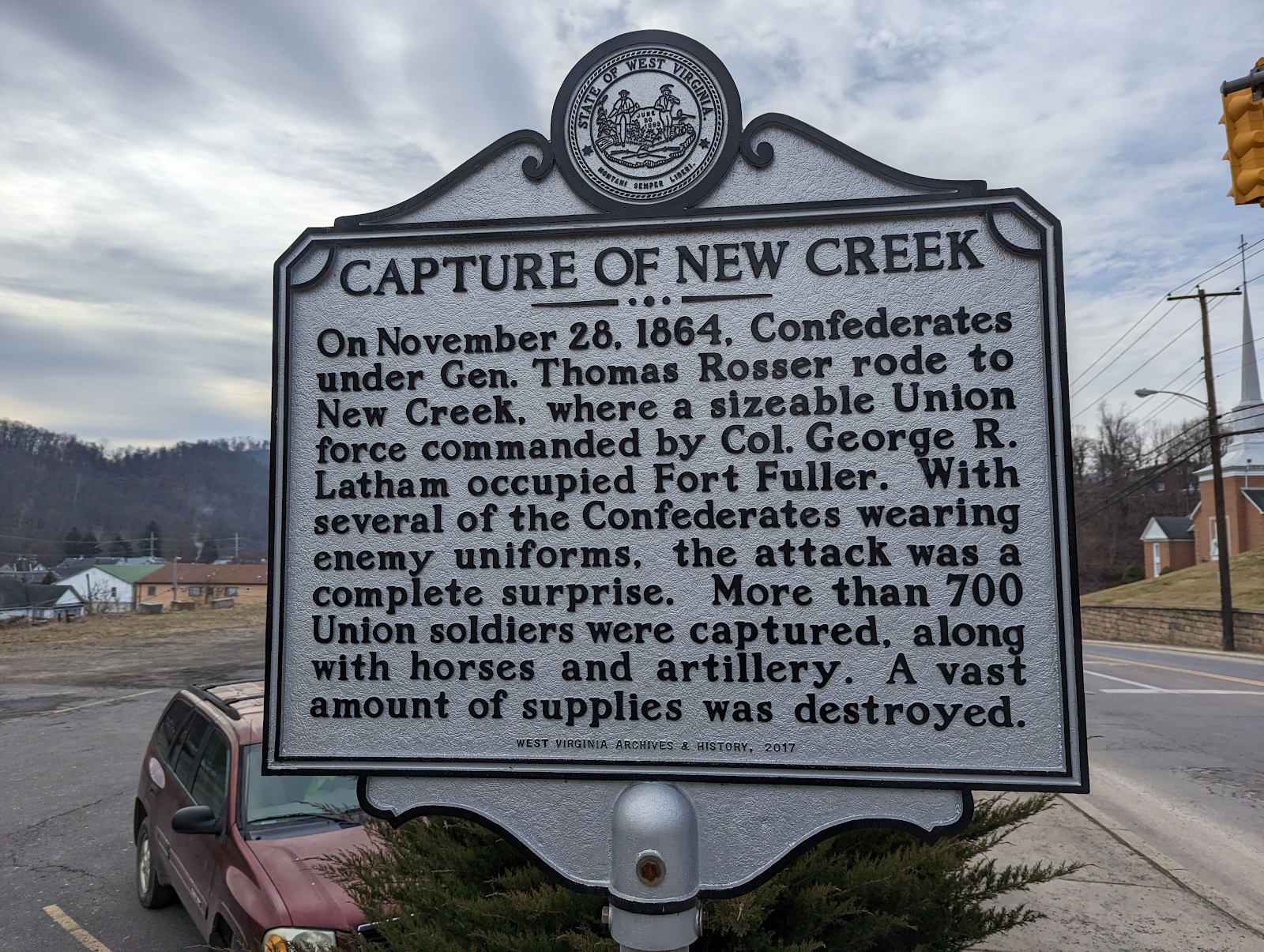Nov. 14, 1865 - Grand Review of U.S. Colored Troops in Harrisburg, PA
Nov. 14, 1865
Grand Review of U.S. Colored Troops
Harrisburg, PA
'Excluded from a May 1865 "Grand Review of the Armies" in Wash., DC, U.S. Colored Troops from Penna. and Mass. regiments assembled here at State and Filbert Sts. on Nov. 14, 1865 for a parade honoring their courage during the Civil War. Grand Marshal T. Morris Chester led them through Harrisburg to Sen. Simon Cameron's Front St. home to be gratefully acknowledged. Octavius Catto, William Howard Day, Gen. JB Kiddoo, & the Rev. Stephen Smith spoke.'
 |
| https://www.hmdb.org/m.asp?m=6773 |
This guy was also from Harrisburg!
Elsewhere on the original capitol grounds, there are other monuments to the Underground Railroad that mention this grand review:
"Harrisburg's prominent role in the advance of the Union cause leading to the Civil War was particularly evident by its sympathy in harboring former slaves who had escaped servitude from the South. As early as 1836, the Harrisburg Anti-Slavery Society was founded. So influential was the group that it brought noted reformers William Lloyd Garrison and Frederick Douglas to hold a rally at the Dauphin County Courthouse in 1847. During this period, Harrisburg became a key station in the "Underground Railroad" which stretched from Maryland northward to Canada...and...The Old 8th Ward was a site of refuge for those escaping enslavement and needing protection from the Fugitive Slave Act of 1850. In the spring and summer of 1863, T. Morris Chester conducted United States Colored Troops recruitment rallies throughout the Old 8th Ward, and his efforts fueled Black patriotism and pride for the Union war effort. On November 14th of 1865, Harrisburg would be the only American community to welcome the African American Patriots of the Civil War who were omitted during the May 1865 Washington DC Grand Review."
Nearby is Soldiers Grove, with a tree planted in memorial for the soldiers of various armed conflicts. Some of the trees seemed to be missing, but whatever.
 |
| https://www.hmdb.org/m.asp?m=6774 |
There's also a great view of the impressive (post-War) Soldiers and Sailors Memorial Bridge from this spot near the Capitol.
"The master plan for the development of the Pennsylvania Capitol Complex was expanded at the close of World War I to include the erection of a colossal bridge which would memorialize those who fought in that War. Such a bridge would punctuate the formal symmetry of the main Capitol building and the four flanking neoclassically-styled office buildings that would evolve by the close of the 1930's. Prior to that time, State Street on Allison Hill descended sharply into the City's industrial corridor, then onto an iron bridge spanning Paxton Creek and the railroad tracks, and terminated at the old Eighth Ward neighborhood behind the gracious new Capitol that was completed in 1906. Recognizing that such an approach would in no way complement the master plan for the new district of buildings, the Commonwealth retained nationally acclaimed architect Arnold Brunner of New York City, who had already developed the Capitol Complex master plan, to conceptualize the new bridge. Although Brunner produced the basic design, he died in 1925 leaving the final detail work to New York architects William Gehron and Sidney F. Ross who reconfigured and heightened the structure's principal icon elements, the 145-foot high monumental pylons at its western end. Dedicated on August 22, 1930, and built of reinforced concrete faced with heavily rusticated Indiana limestone over a granite base, the bridge's grand arches were highlighted with decorative elements depicting World War I military hardware. After completion, the bridge's memorial was expanded to honor the soldiers and sailors of all American wars."
 |
| https://www.hmdb.org/m.asp?m=6829 |
This lovely article from nearby Dickinson College offers more details on the Grand Review. They read a glowing letter from Ben Butler. It's great that the citizens of Harrisburg decided to have this party for the USCT were excluded from the larger grand review in DC. And though free-black and enslaved people were reported to work on digging the entrenchments against the Confederate threats on Harrisburg, there are at least some account of the military service of black folk being turned away. So this is a sort of nice closure.








Comments
Post a Comment